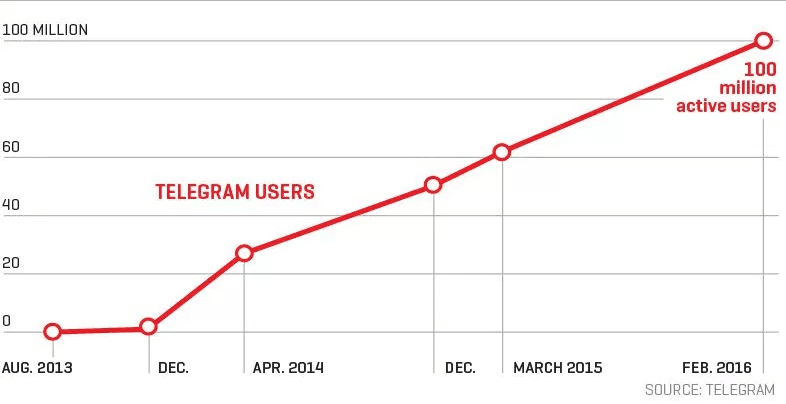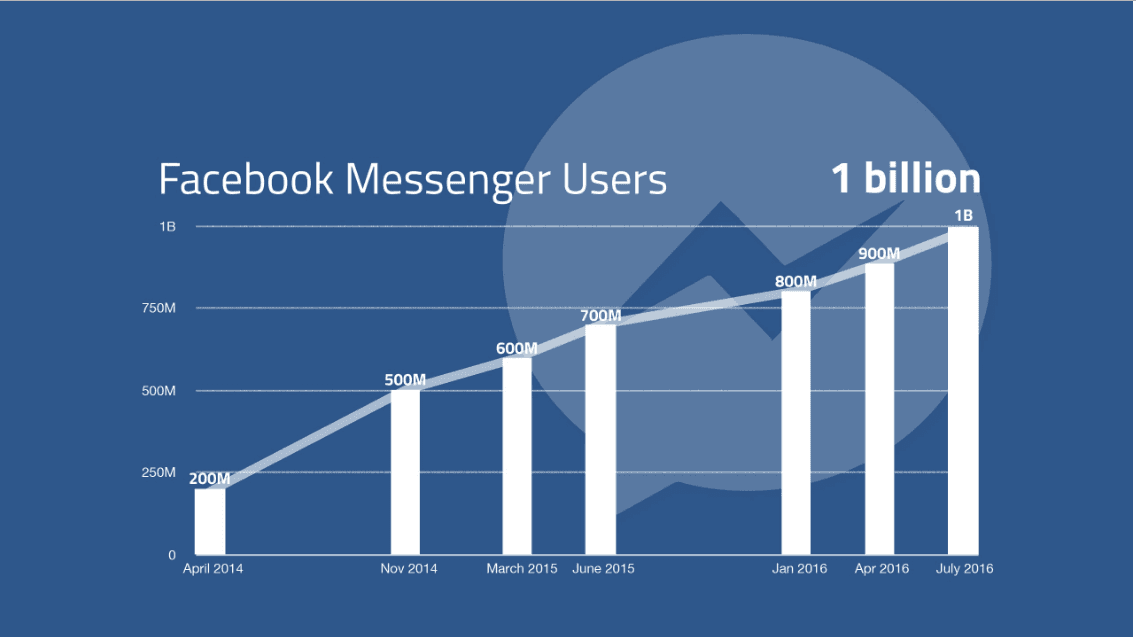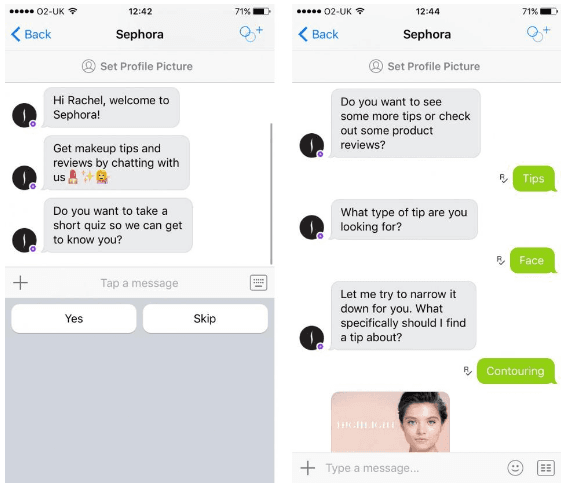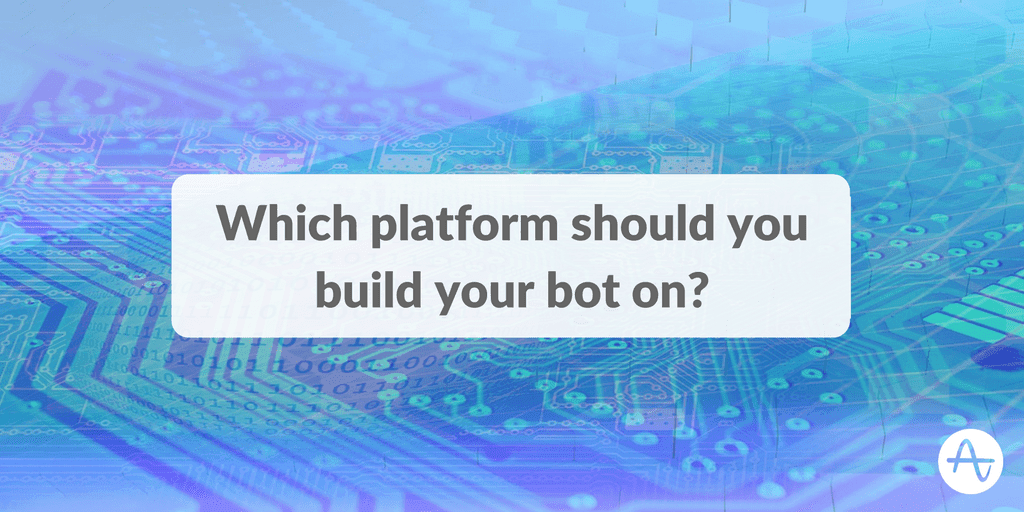Which Platform Should You Build Your Bot On?
We talked to this multi-platform entrepreneur about the differences between the common bot platforms out there, and how you should think about choosing one for your bot.
Imagine buying a car or planning your next vacation through a messaging app. Bots are making this possibility a reality by changing how businesses and customers communicate. They’ve been around for years, but as technology has improved, they’ve seen a major resurgence in recent years. They’ve reinvented themselves as an innovative way for brands to connect with their customers. Think Siri from Apple or the new Google Home. The truth is that with all of the bots out there and the wide range of audiences they reach, you need a platform that will put you in front of the right customers.
To learn more, we talked to bot expert Romain Nouzareth. Back in 2012, Romain and his company Fresh Planet released SongPop, which was the top rated Facebook game of the year and was cited by Mark Zuckerberg as “one of the most fun Facebook games” he’d played. Romain and his new company eWRLD are responsible for Trivia Blast, the social trivia game playable on Messenger, Kik, Telegram, and now, Google Home. We talked to this multi-platform entrepreneur about the differences between the common bot platforms out there, and how you should think about choosing one for your bot.
Quickstart: What you need to consider before choosing a platform
Platforms are just as unique as the bots that use them. That means your choice of platform needs to be based on your needs and the goals you’ve set out for your bot. Do you want to reach lots of users? Do you need to access specific features? The best platform for you is the one with the right mix of features and capabilities. Consider the following questions:
- **Where are you in your product life cycle? **
- What niche are you targeting?
- How much social reach do you want?
- **What features do you need most? **
Where are you in your product life cycle?
If you’ve launched a new product or service, it’s best to start small with your bot. Figure out your initial goals and test the waters. Is there a place for your bot in your chosen market? Are you meeting a need? Do users seem interested in what you have to offer? A platform like Telegram is a good place to start if you’re new to bots and still figuring out who your target audience is. One of the newer platforms available, Telegram launched in 2013 and has seen steady growth since then. [Source] So far it has 100 million users with 350,000 new users signing up every day. This is still small when compared to a behemoth like Facebook Messenger, of course, but it could provide a solid foot in the door and an opportunity to gain user learnings for a new bot. If your product or service is mature and you already have a clear idea of the type of audience you want to reach, Facebook Messenger is a better choice. It’s been a standalone messaging app since 2014 but already has over 1 billion users. It has the potential to become the central hub for users to engage with companies they do business with. [Source] Estimates suggest that it won’t be long before Facebook Messenger is actually larger than Facebook itself. With the steady growth we’ve seen over the last two years, it’s on pace to reach over 2 billion users by 2018. That means that once you know who your bot is really for, your growth opportunity is practically unlimited. If you’re in the introduction or early growth stage, a platform with a diverse user base like Telegram is best. If your product is further along and more mature, Facebook Messenger’s large pool of users is a better option. Keep in mind that with a larger platform comes more competition. Facebook Messenger currently has 34,000 active bots. You’ll have to work extra hard to stand out in the crowd and have your target audience take notice.


What niche are you targeting?
Knowing exactly who your ideal user is will be a huge identifying factor for the type of platform you use. You need a platform that caters to your niche market to maximize your reach. Kik launched in 2009 and already has over 300 million users and over 6,000 bots using it. As it’s grown, its audience has become highly segmented. Nouzareth feels that’s what’s “really interesting about Kik—its demographic.” Millennials and teenagers are by far the biggest user group on this platform. 70% of its users are between 13 and 24, with around 40% of all US teens using the app. Retail brand Sephora saw the opportunity. Sephora primarily targets millennial women, and launched its bot on Kik in early 2016. Its focus is gathering enough information about its users to serve up product suggestions and product reviews. This approach allows Sephora to cater its promotions to meet the specific needs of its users. [Source] When it comes to experimenting, Nouzareth says, “Kik is really interesting if you want do different kinds of marketing strategies or if you want to reach a specific market.” Knowing your main demographic is one thing, but being able to cater to each segment within your target niche will help your bot following grow. [Tweet “The best #bot platform is the one with the right mix of features and capabilities.”]

How much social reach are you after?
Facebook Messenger is one of the most far-reaching platforms available. Their ultimate plan to become a WeChat-type hub for everything from e-commerce to payments means it’s the best place to build if you’re looking to have a chatbot with social built in. Nouzareth explains that “not only does Facebook Messenger have the reach, but they have the social graph.” “That means they can always be learning more about users and keep them coming back,” he adds. He uses the example of music preferences. If a segment of his game Trivia Blast’s users are identified as Justin Bieber fans, then Romain could use Messenger to specifically suggest them some Justin Bieber quiz questions. A few days after the play, the bot can send those users a push notification-type message about where they rank worldwide on Justin Bieber trivia—spurring them to return. Because Messenger developers can tap into the social graph, Trivia Blast’s users can challenge their friends to quizzes. But that capability is in no way limited to games—all kinds of content makers can build social experiences through chatbots. Users can choose specific information that interests them and you in turn can use it to hone your campaigns. Using a platform with the right mix of social reach and target audience will give you the exposure you need. Just because your bot is available to billions of people doesn’t mean they’ll take notice. Your bot needs to meet the needs of your target audience and get you the social exposure you’re after.
What features do you need the most?
This is important to ask because in addition to having the right amount of social reach or the right demographics, your platform needs to have features that make your life easier. Consider the following features when choosing your platform: **Integration: Choose a platform that will allow you to integrate with other applications to maximize user experience. Facebook Messenger’s extensive developer platform lets you integrate with natural language processing software in wit.ai, as well as **productivity applications that let you set reminders and track events. Dashboard: Kik is unique in that they provide quite extensive engagement data to help companies enhance their bots. There’s a bot ratings section on their developer dashboard. Developers can see overall ratings and the number of users who submitted ratings. That feedback can then be organized month over month to track the results. [Source] **Monetization: **Monetization is one of the trickier aspects of building bots right now. Telegram, for instance, is completely free to use and doesn’t allow any advertising on its platform. There are rumors they will introduce payments next year. Facebook Messenger allows advertising, and your bot can use payments, but users will only receive ads if they’ve communicated with your brand in the past.

Which platform will you choose?
The type of platform you use depends on the bot and its purpose. Based on your target audience and business type, choose a platform that will allow you to grow and nurture a close relationship with your users. You don’t have to be tied to just one platform either. If you need to maximize your reach and take advantage of specific features, use more than one platform. Platforms can be customized to meet your needs and your users. Use features like data collection to learn more about your users and adapt to their needs. Key takeaways? Telegram has positioned itself as the platform for speed, security and simplicity. Kik is the place to be if you want to interact with younger users and Facebook Messenger is the best platform to reach a wide range of users. Taking the time to learn more about what users are looking for will encourage continuous engagement with your bot. Choose a platform that gets you in front of your target group and works with you to grow your business. [Tweet “Choose a #bot platform that will let you to have a close relationship with your users.”]
Comments
Siddharth Gopi: I came across Microsoft Bot Builder recently. They allow you to write code once and deploy to all platforms. They call it a connector.

Alicia Shiu
Former Growth Product Manager, Amplitude
Alicia is a former Growth Product Manager at Amplitude, where she worked on projects and experiments spanning top of funnel, website optimization, and the new user experience. Prior to Amplitude, she worked on biomedical & neuroscience research (running very different experiments) at Stanford.
More from Alicia




